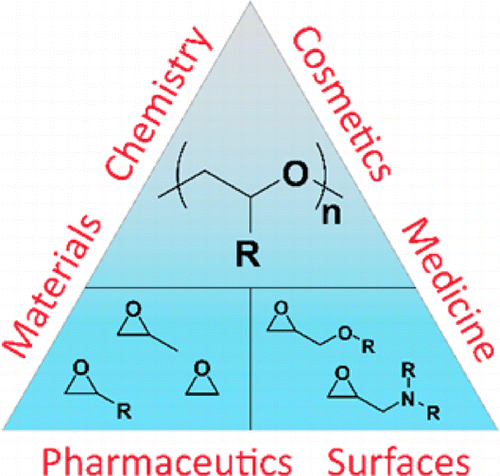|
P. Jung, A.D. Ziegler, J. Blankenburg, H. Frey, Angew. Chem. Int. Ed. 2019, 58, 37, 12883-12886. |
Glycidyl tosylate appears to be a non‐polymerizable epoxide when nucleophilic initiators are used because of the excellent leaving group properties of the tosylate. However, using the monomer‐activated mechanism, this unusual monomer can be copolymerized with ethylene oxide (EO) and propylene oxide (PO), respectively, yielding copolymers with 7–25 % incorporated tosylate‐moieties. The microstructure of the copolymers was investigated via in situ 1H NMR spectroscopy, and the reactivity ratios of the copolymerizations have been determined. Quantitative nucleophilic substitution of the tosylate‐moiety is demonstrated for several examples. This new structure provides access to a library of functionalized polyethers that cannot be synthesized by conventional oxyanionic polymerization. |
|
J. Blankenburg, K. Maciol, C. Hahn, H. Frey, Macromolecules 2019, 52, 1785–1793. |
Two novel epoxide monomers 3,3-dimethoxy-propanyl glycidyl ether (DMPGE) and 3,3-dimethoxy-2,2-dimethylpropanyl glycidyl ether (DDPGE) were developed for the introduction of multiple aldehyde functionalities into the poly(ethylene glycol) (PEG) backbone. The acetal protecting group for the aldehyde functionality is stable against the harsh, basic conditions of the anionic ring-opening polymerization. Both monomers could be homopolymerized as well as copolymerized randomly with ethylene oxide (EO) in a controlled fashion. |
|
J. Herzberger, K. Niederer, H. Pohlit, J. Seiwert, M. Worm, F. R. Wurm, H. Frey, Chem. Rev. 2016, 116 (4), 2170-2243. |
The review summarizes current trends and developments in the polymerization of alkylene oxides in the last two decades since 1995, with a particular focus on the most important epoxide monomers ethylene oxide (EO), propylene oxide (PO), and butylene oxide (BO). Classical synthetic pathways, i.e., anionic polymerization, coordination polymerization, and cationic polymerization of epoxides (oxiranes), are briefly reviewed. |



